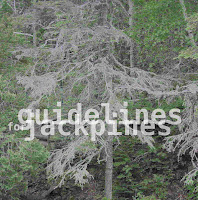Toward a model of the motion of the existential cycle (or something like that)
Well, let's take a different turn in our thinking. So much for Gettier problems and justified true belief--they belong to each other. Certainly but for justified true belief, a Gettier problem is hardly a problem.
I also noticed I over sold the idea of unities. I do think fundamentally there is a unity of truth and a unity of being. However, activity or will is probably less a unity and more a multiplicity. In fact, I would go so far as to say that it is because humans have such a predilection for noticing activity that it is so difficult for us to see unity at all. Instead, we seem to be faced with a inchoate or at the least irregular terrain of truths and material reality.
At any rate, here are some rough diagrams of the overall model I am suggesting. First, we see several interstices within truth, activity, and being, which lie between dichotomies. There is a general flow of time from left to right, and a flow of phenomenology at the junctures, by which, I would vaguely posit, personal identity is maintained. At each end point is a spin toward some other state, marked with the letter T, A, or B for truth, action, being respectively. Continuing outward is a greater fabric of these lines which lie outside the perceptual borders which are (I am speculating) created by the phenomenological pull of the interstices (in a moment I'll show a second diagram talking more about this motion).
 |
| Click to enlarge |
This is a very crude figure of the basic arrangement. The model itself creates many new problems which I won't try to tackle right now. However, it is important to understanding this conception to also understand that the real notion is not static, as this picture would present, nor full of "ends," which is precisely what I was complaining of in my earlier posts. Rather, since every end has a proclivity for some other state, it is a model of continual, cyclical motion. NB: I notice that I have some end-points proclivities mis-labeled in this drawing, but the second diagram should help to clear this up.
Below is a diagram of each state as a part of a cyclical movement. This makes more sense if I mention that the movements consist of pairs of lines--one from each implied vertical plane above. This is very rough, but I tentatively suggest that one plane is what we might call "subjective" while the other is what we might call "objective." For example, for being, creation and dissection are in the subjective plane, while void and ground state (these are all very rough terms) are in the objective plane. I don't know if this notion will hold though, because I haven't worked through that part yet. Points T, A, and B represent the interstices, or what I had whimsically described in my first diagram as the existential axes. In a later post I will try to say more about what I think these axes actually represent.
 |
| Click to enlarge |
In other words, you would do better to describe a unified truth which became diverse as it was made evident in being, which, through dissection created an emotion or felt reality which brought about some rationalized action which unified understanding but made it generally obscure, resulting in a state of chaos which resulted in an extreme rigidity of will...in a word, the further you follow the lines, the closer you mimic the existential cycle.
There is much more to be said about all of this (for example, these are not really "lines" exactly, and much more that is necessary). But, this is as far as I have gotten in my notebook.


0 Comments:
Post a Comment
<< Home